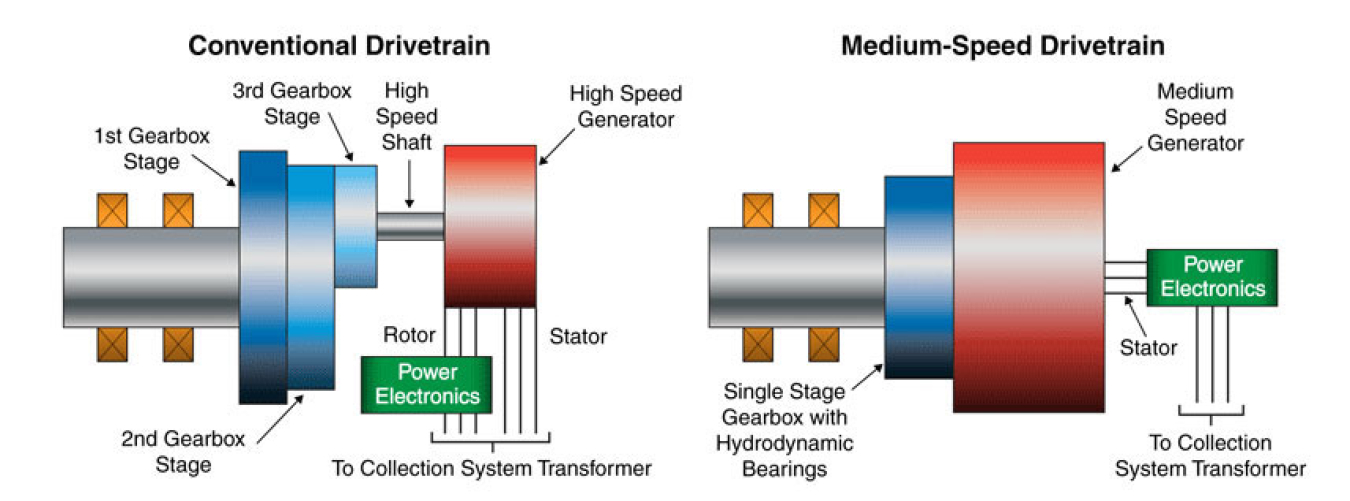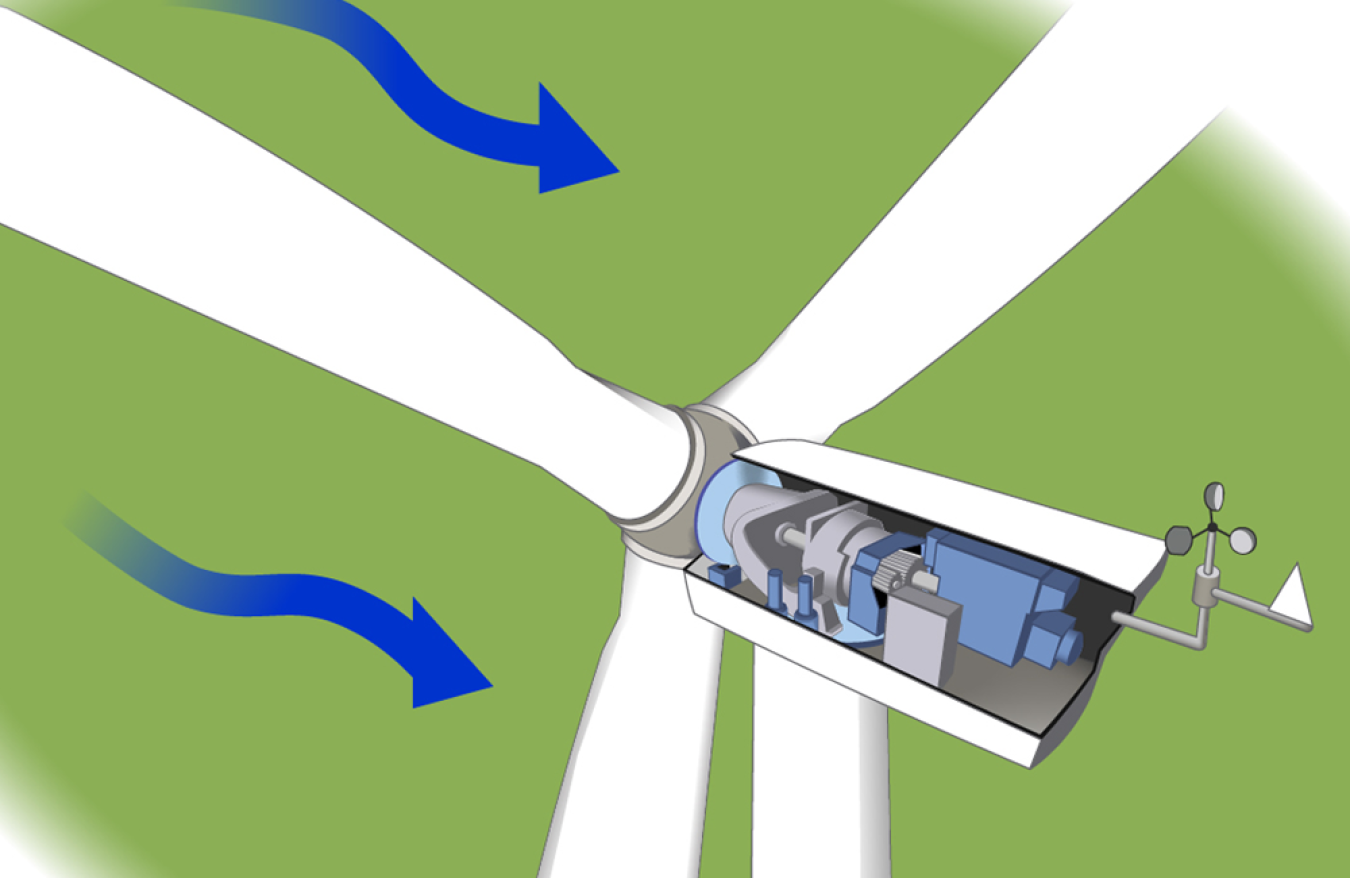The U.S. Department of Energy (DOE) supports advanced manufacturing techniques that are leading to the "next-generation" of more reliable, affordable, and efficient wind turbine drivetrains. As turbines continue to increase in size, each and every component must also be scaled to meet the demands for renewable energy.
What Is the Drivetrain?
The drivetrain of a wind turbine is composed of the gearbox and the generator, the necessary components that a turbine needs to produce electricity. The gearbox is responsible for connecting the low-speed shaft attached to the turbine blades to the high-speed shaft attached to the generator. Assisted by a series of gears of varying sizes, the gearbox converts the slow rotation of the outer blades—typically 30–60 rotations per minute—to the roughly 1,000–1,800 rotations per minute that the generator needs to begin producing electricity.
The Need for Improved Drivetrains

This illustration compares a medium-speed drivetrain to a conventional drivetrain. NREL's medium-speed drivetrain is designed to increase reliability, improve efficiency, and reduce costs. Image from NREL
The majority of wind turbine failures happen within the gearbox, leading to costly repairs and downtime. The next-generation of drivetrains will integrate more efficient and reliable components and leverage new advanced manufacturing processes.
In conjunction with academic and industry partners, the National Renewable Energy Laboratory (NREL) is designing the next generation of drivetrains that will increase reliability, decrease mass, improve efficiency, and reduce cost.
Single-Stage Gearbox: Conventional gearbox designs encompass a gearbox broken up into three stages. Each stage of a traditional gearbox is designed to increase the speed of the high-speed shaft connected to the generator. The new single-stage gearbox design encompasses only one gearbox stage, incorporating the use of hydrodynamic bearings, dramatically reducing the possibility of a gearbox failure. With fewer, more efficient parts, there is less of a chance of a component failing or jamming.
Medium-Speed Permanent Magnet Generator: Medium-speed permanent magnet generators are beginning to make their way into new drivetrain designs. Medium-speed permanent magnet generators use a fraction of the rare-earth metals used in standard generators drastically reducing the cost of production. Additionally, medium-speed permanent generators operate at a lower voltage than standard generators, reducing the amount of copper used which decreases the cooling system requirements and the cost of the power cables running down the tower.
High-Efficiency Power Electronics: Advancements in the electronic components of the turbine stem from the use of advanced materials and improved circuit designs. These new designs allow for increased reliability, capacity, efficiency, and an all-around reduction in cost.
Drivetrain Reliability Collaborative
A detailed look at the inside of a wind turbine. For more information, check out "How Do Wind Turbines Work?"
Initiated in 2007, the Drivetrain Reliability Collaborative was launched and later became the Drivetrain Reliability Collaborative (DRC). The DRC combines data from field testing, dynamometer testing, analysis, modeling, operations, failure data, and maintenance research to determine why wind turbine gearboxes do not always achieve their expected design life.
A central database of gearbox failures is maintained through the combined efforts of manufacturers, owner, operators, consultants and researchers. This data allows manufacturers to better predict and build upon the expected lifetime of various components.


